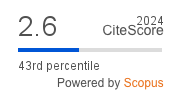ABC-WSVAD: Swarm Optimization for Weakly-Supervised Video Anomaly Detection
DOI:
https://doi.org/10.4114/intartif.vol28iss75pp281-297Keywords:
Video Anomaly Detection, Weakly-Supervised anomaly detection, UCF-Crime, swarm optimization, Artificial Bee Colony OptimizationAbstract
Nowadays, Video Anomaly Detection (VAD) has undergone a significant transformation due to advancements in Deep Learning (DL) and Computer Vision (CV). VAD holds substantial importance in various applications, particularly security, given the increasing spectrum of criminal activities. Conventional supervised anomaly detection techniques heavily rely on meticulously labeled data, which is time-consuming to annotate and is the basis for training anomaly classifiers. However, assembling extensive annotated datasets for VAD poses challenges due to the hard and time-consuming of the task. Weakly Supervised (WS) approaches reduce reliance on fully labeled data by utilizing alternative supervision sources or weak labels for training anomaly detection models. Despite their promise, many WS methods experience prolonged processing times, critical for timely crime detection. The main objective of this research is to outperform previous work in terms of performance and training time. In this paper, we propose the utilization of Artificial Bee Colony (ABC) optimization for training a fully connected neural network. This method efficiently searches for optimal weight configurations to minimize the error or loss function. Our approach is rooted in Multiple Instance Learning (MIL), tailored specifically for Weakly Supervised Video Anomaly Detection (WSVAD). The presented method was tested on a set of 1900 videos sourced from the comprehensive UCF-Crime dataset, utilizing the Inflated 3D ConvNet (I3D) feature extractor. The experimental outcomes highlight the superiority of the proposed ABC-WSVAD algorithm compared to other methods. Notably, the methodology outperforms baseline approaches by a 4.36% increase in the Area Under the Curve (AUC), underscoring its superior effectiveness in anomaly detection.
Downloads
Metrics
Downloads
Published
How to Cite
Issue
Section
License
Copyright (c) 2025 Iberamia & The Authors

This work is licensed under a Creative Commons Attribution-NonCommercial 4.0 International License.
Open Access publishing.
Lic. under Creative Commons CC-BY-NC
Inteligencia Artificial (Ed. IBERAMIA)
ISSN: 1988-3064 (on line).
(C) IBERAMIA & The Authors









